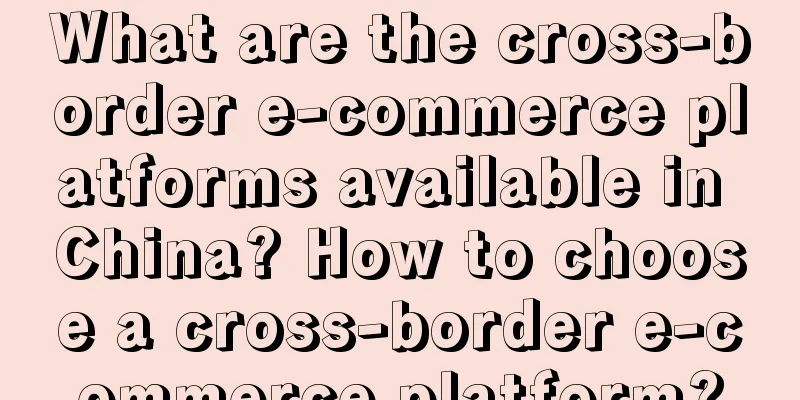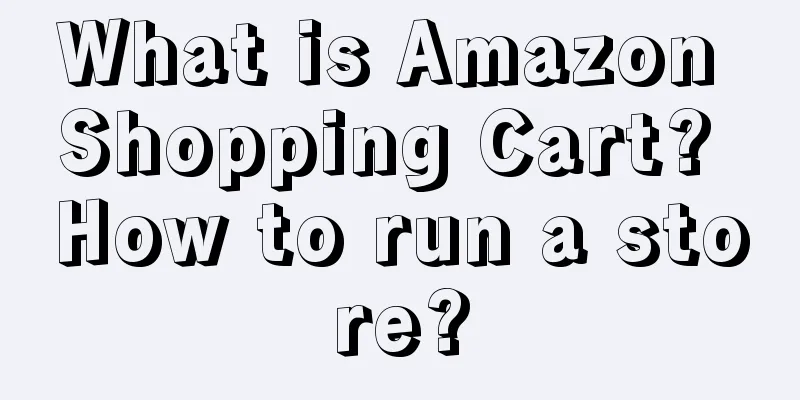What does it mean that the entry point for consumer decision-making is returning to "search"?丨Annual trend

In an era of oversupply of content and goods, search has become an increasingly important consumer behavior, and search portals have become a new consumer decision-making field. Platforms have emphasized their users’ search mentality and strengthened their search commercialization capabilities through various means. On some platforms, search is surpassing information flow to become a new commercial tool and model with greater growth potential. Brands are also paying more and more attention to search marketing because it can highlight the long-tail value. The advancement of platform commercialization from information flow to search means the improvement of the overall commercialization capabilities of the Internet. More industries may be included in this system in the future, including the clue industry, which has become a new focus. The commercialization of platforms in 2025 will definitely be a competition of comprehensive capabilities that combines information flow + search and other capabilities. Brand marketing in 2025 will also rely more on search. Search is becoming a new paradigm and trend for brand marketing and platform commercialization. That’s why we’re including search as one of our annual trends to watch. Search is becoming more and more important. Not only are consumers' search habits improving, but brands and platforms are also working hard to seize the brand marketing and platform commercialization opportunities and trends released by search. Data from ByteDance show that as of July this year, more than 90% of Douyin users have a search habit, with each person searching 7 times a day, and an average daily search volume of more than 4 billion times. In August, Douyin launched an independent search app "Douyin Search". Last year, Xiaohongshu launched a commercial product called Search Direct, and 70% of its monthly active users have search behavior. Recently, there is news that its average daily search volume is 600 million times, which is half of Baidu's. Charles, a veteran in the SEO optimization field, told us that this year, many more clients have come to them for search placement. Some clients even come to them urgently. For example, a client who does maternity and baby care overseas, one day "directly made an appointment for a meeting in 15 minutes, and wanted to see the plan three days after the meeting." There is another client, "I just met him a week ago, and he is signing a contract now." Charles also revealed that the proportion of search service budget in brand marketing is also gradually increasing. In the current environment, brands are becoming more cautious in their advertising. Whether it is brand advertising or performance advertising, the overall advertising budget of brands is shrinking, but "the budget of the search section remains unchanged for the time being." If the numerator remains unchanged and the denominator becomes smaller, the proportion will naturally increase. AI is also changing the imagination of search. Search is the best scenario to combine with AI big models. Large companies that already have a content supply base can provide users with better information acquisition experience and efficiency by adding AI, such as ByteDance's Doubao and Xiaohongshu's Diandian search. The importance of search has increased fundamentally because of the explosion of content and product supply, and the increase in consumers' desire to actively obtain information. Secondly, the traffic monetization model dominated by closed-loop e-commerce has encountered a ceiling challenge, and it is necessary to find new ways that are closer to transactions and easier to deliver. According to Kotler's 5A marketing model theory, search is the last step before a transaction. Therefore, we believe that the importance attached to search sends at least the following key signals.
01 Shift in consumer decision-makingSearch is a kind of information acquisition behavior actively generated by users. Search is becoming more and more important, which is the result of the combined effect of the current information environment, consumption environment and marketing environment. As the amount of Internet content increases, the recommendation algorithm, which has been the main information distribution logic for a long time, can no longer accurately match people and content as efficiently as before. At the same time, users' experience in obtaining Internet content is becoming more and more rich, and their demand for content is becoming more precise and personalized, which naturally leads to more active search behaviors. On the other hand, from the perspective of the consumption cycle, the current supply of goods is also in excess, and consumers are becoming more cautious in making consumption decisions. They will compare and look at multiple aspects such as price, material, and usage scenarios, rather than being easily stimulated and converted as before. Similarly, consumers have richer consumption experience and more detailed and personalized needs, which also rely on more searches for product information to achieve. This is the fundamental reason why search is increasingly valued, whether as an action or link in brand marketing, or as a tool or product for platforms to realize commercial revenue. The source is to use new tools to meet users' information needs under the new supply and demand cycle, including content information and product information. For brands, service providers and platforms, traffic is wherever users are. Wherever user needs are stimulated and generated, there is the consumer decision-making field. As users use search more and more, search portals become more and more important consumer decision-making fields. Brands and service providers should follow the water and grass and do more to occupy search keywords and optimize search results. 02 What is the ceiling of closed-loop advertising?Complementing the changes in consumer habits is the fact that the traction of closed-loop advertising, a brand marketing force, has reached its growth ceiling in the e-commerce sector. Roughly speaking, the advertising products of closed-loop e-commerce can be divided into two forms: one is the sales of traffic positions of shelf e-commerce, such as Tmall’s Diamond Exhibition and Direct Express; the other is the information flow delivery by content platforms that have realized the closed-loop transaction within the site, such as Douyin Qianchuan. Since the birth of digital marketing, it has been distinguished from the previous digital marketing model by being traceable and quantifiable. The ultimate traceability and quantification is that the entire process from planting to harvesting is completed on one site. In fact, this has only been achieved since the emergence of live e-commerce. In the past, people would also "visit" Taobao (that is, be inspired by products on Taobao), but offline advertising, TV advertising, Baidu, and Weibo still helped to make consumer decisions to a large extent. After the emergence of short videos and live broadcasts, the number of people who access the Internet and the average viewing time per person increased sharply. Short videos + live broadcast content have become the greatest common denominator of users' information sources, and with the establishment of transaction links, it has become an increasingly large consumer decision-making field. The establishment of an e-commerce closed loop also means that the ROI of digital marketing can be truly quantified. Therefore, the delivery of ROI-oriented information flows in short videos and live broadcasts has become an advertising and marketing method that has been accelerated in the past period of time when brands want to increase transaction scale. However, as the growth rate of live-streaming e-commerce has slowed down due to the peak of traffic, the e-commerce advertising share that can be divided into closed-loop advertising forms such as information flow has also reached its ceiling. This is a change in the entire marketing environment, which will affect the subsequent marketing choices of all brands, especially all merchants that do not offer the best value for money. After all, the ROI-oriented information flow delivery can ultimately screen out merchants with large delivery capabilities or who want to exchange profits for growth, or white-label merchants with the best cost-effectiveness and who can be less particular about content materials. For other merchants, when the same amount of money can no longer achieve the same immediate conversion effect as before, they naturally have to adjust the ratio. Especially those brands that have grown by delivering information flow on live e-commerce want to find new and deliverable brand marketing methods as soon as possible. Search is a link very close to transactions. The behavior of this link can be quantified, and its quantified results are closely related to GMV. BEN, a professional in digital marketing and e-commerce, told us: "Generally speaking, the UV purchase conversion rate of traffic from search is 3-5 times that of other channels." According to the data of Tmall flagship stores of general international consumer goods, "20% of search traffic will eventually contribute 70%-80% of GMV." 03 A New Marketing ParadigmSearch is a form of advertising that is in the middle of brand and effect. It usually uses the money of the brand marketing budget, and the traffic effect of search terms is long-tail. Charles told us that they have clearly seen in the background of multiple platforms that for the same content, the half-life of recommended traffic is much shorter than that of search traffic. At the same time, search can present results with data better than pure brand advertising. Take Xiaohongshu as an example. When a user searches on Xiaohongshu, he usually reads 30 notes. As long as the customer's notes appear in the first 30 posts with a certain probability within a month, a large amount of accurate traffic can be obtained. For brands, the best marketing must be one that can both guarantee ROI and convey brand value. If the proportion of pay-per-performance information flow advertising is too high, the interpretability of marketing process data will be reduced, and the dissemination of brand value will also be limited. Search advertising can at least help brands "buy explanations and dig out insights," said BEN. Therefore, the increasing importance of search in brand marketing methods basically means that brands are exploring a new brand marketing paradigm: both deliverable short-term results and illusory long-term brand value. This implicitly conveys a shift: in the past few years, the proportion of performance advertising has been increasing in the marketing market, but brands have gradually realized another thing, that is, no matter what form of advertising is used, it cannot be at the expense of brand power. Performance advertising that focuses purely on ROI will take effect quickly, but once it stops, it will also lose its effect quickly, and sales will quickly return to the starting point. In the industry, we often hear about cases where a brand that can achieve the ultimate ROI has no natural transactions at all during the flat sales stage. There are similar studies in the advertising industry. The British Advertising Association once mentioned in a document that brands with accumulated brand value will catch up with performance advertising in sales in the next 6 months. Search satisfies the brands’ needs of both wanting and needing in the new era. It should be noted that the search we are talking about now is different from the search in the Baidu era. Baidu was more of a traffic diversion site at the beginning, and rarely made consumption decisions directly on the site. It was more about helping users to screen broad categories, and purchases still had to be made in online and offline trading venues. Today's search is the result of user search habits, search needs, and search result presentation capabilities developed by content platforms such as Douyin and Xiaohongshu. If you enter "New Year's Day" on Xiaohongshu, Douyin, and Taobao respectively, different associated words will appear in the drop-down list, and different content will be presented when you click on them. Xiaohongshu has Sososhu's summary notes, and the results presented are more strategy-oriented; Douyin will have more consumption guidance, such as scenic spot tickets in the lower left corner; Taobao, as a shopping platform, also has the need to gather and display Taobao hot searches, and tries to provide consumption decisions through Taobao Q&A. Charles reminded us, "Many people don't think about what it means to read 30 notes after searching. It means that if the brand's content does not appear in the top 30 search results, the effectiveness of the promotion will be greatly reduced." Therefore, the premise for brands to seize the current search traffic is, first, to have content, and second, to make the content appear in the first few keywords. In other words, today's search is closely related to content production, content understanding, and content interaction. Many brands that grew up in the recommendation generation and information flow generation know that search is important, but they don’t know how to do it. How to find keywords, how to select keywords, how to bury keywords, and how to occupy positions are all handled by service providers. Cang Xiang, technical director of commercial products at Xiaohongshu, also mentioned that "since search advertising involves buying words, especially some long-tail words, it is more difficult for some brands to get started", so the platform needs to provide corresponding tool assistance. However, even though search is becoming a new paradigm for brand marketing, it is only one of the means of brand marketing, not a panacea. The essence of brand marketing is to find ways to appear in the consumer decision-making field and influence consumer decisions. Just as Coca-Cola CEO James Quincey said, the mission of each generation of Coca-Cola CEO is to "find ways to connect with the new generation of consumers." If big brands such as Adidas, Nike, and Starbucks, which are currently experiencing a trough, want to get out of the predicament, they must also find ways to connect with this generation of consumers. 04 Platforms that are difficult to close can use search to improve delivery capabilitiesFrom the perspective of the platform, especially platforms that do not have e-commerce closed-loop capabilities, one benefit of focusing on search is that it can provide brands with relatively certain data delivery. The data sources for brands to measure marketing results are: first, online and offline store conversions as results; second, various exposures, clicks, search actions, or data references for crowd asset conversions during the process. Platforms with closed-loop capabilities can directly deliver GMV data of store conversions, such as TikTok; platforms without closed-loop capabilities, before commercializing search, provide more front-end exposure data and crowd asset conversion data - to be honest, these data are far from corresponding to GMV, which is the "immeasurable" problem that brands have always mentioned. The reason why search data is more accepted by brands is that it is a user-initiated behavior, gathering users who have clear orders and conversion needs. In the crowd asset conversion chain, it belongs to the A3 link of the 5A marketing model (Aware, Appeal, Ask, Act and Advocate) of Philip Kotler, the father of modern marketing, which is the final step before conversion. The platform's emphasis on search means that their delivery to customers has extended from A1/A2 to A3, a link closer to conversion, which means that content platforms without closed-loop capabilities want to use this to prove their commercial value. Of course, whether the platform's commercialization relies mainly on expanding A1/A2 or further emphasizing A3/A4 is related to the traffic cycle, consumption cycle, and the current stage of the brands it serves. For example, during the period of increasing traffic, the focus of platform commercialization is to continuously attract new traffic while improving the matching efficiency between traffic and interested groups (i.e. A1/A2 groups). The main way for brands to conduct marketing is to expand the A1/A2 groups and let more people know about them. In the current stage of traffic stock, the large-scale and rapid acquisition of A1/A2 groups is no longer as effective as before. The focus of brand marketing has shifted from increasing the volume to improving the conversion rate of existing users, and from chasing scale to paying more attention to profits. The focus of platform commercialization has also shifted to improving the efficiency of group conversion, which includes displaying the number and frequency of in-site search groups, as well as continuous attempts at AI search. 05 Should the advertising share shift to the content field and leverage lead marketing?For platforms, the advertising formats that play a role in marketing traction are changing in different periods, and platforms with different capabilities can obtain different proportions of advertising market share. ByteDance has become a new giant that can challenge traditional Internet advertising platforms by relying on information flow recommendations. As consumer decision-making shifts to content platforms, and as content platforms place more emphasis on search and improve their search commercialization capabilities, they want to use this as a lever to gain more brand budgets from the market. Since the beginning of this year, Douyin e-commerce has re-emphasized the value of the content field, which may also be related to this. Search can also open up more non-e-commerce advertising - the new generation of search commercialization, combined with the previous content, traffic and recommendation advantages, can help content platforms attract more customers from industries with long decision-making links. This is an area where Internet advertising has not been doing well before. This actually falls under the category of pan-local life - that is, the competition in local services in 2024 has long since jumped out of the early stage of competition around group buying, food delivery and other transactional attributes of Douyin and Meituan. This is also the starting point for understanding the local life of Douyin, Kuaishou, and Xiaohongshu, and how Video Account can release the local life advantages accumulated by WeChat. The Internet is transforming retail, or the development of e-commerce. The first thing to do is to focus on categories that are most compatible with the Internet content format and can best exert the Internet's scale effect. The categories that can be better served by platform commercialization do not exceed this scope. Generally speaking, it is the industries that are quick to make decisions and are more easily stimulated, such as fast-moving consumer goods, beauty, shoes and clothing, and home appliances, which are not quick-decision-making but have a relatively concentrated brand effect. The commercialization of the above industries can be better met through brand advertising on the platform, business cooperation between creators, and information flow advertising based on recommendations. Broadly speaking, the e-commerce advertising of Douyin and Kuaishou and the advertising revenue of Pinduoduo all come from this. However, there are still many industries in the consumer market that require richer information comparison, more personalization, and longer decision-making cycles, such as automobiles, home improvement, education and training, etc. Users are more proactive in their consumption needs for these industries and rely more on active searches. After all, everyone has their own driving needs and habits, their own preferences for decoration styles, and they want to do education and training and employment guidance for different needs. It is difficult to fully meet needs and make decisions by push alone. These industries belong to the lead industry, or large open-loop industry in the context of Internet commercialization. They are a tough nut to crack. Comprehensive platforms can only make money from front-end lead collection, while conversions must be completed offline or through the company's own customer service team. Next, as the platforms pursue commercial growth, the lead industry may be more sought after as an incremental industry, and platforms with consumer decision-making minds + new search service capabilities + lead commercialization capabilities may have more advantages. Meituan, Douyin, Xiaohongshu, and Video Account each have their own strengths. Douyin Local and Xiaohongshu have clearly emphasized the importance of the lead industry. It is said that the biggest growth highlight of Douyin this year comes from the expansion from local to comprehensive industries, including many lead industries, such as auto 4S stores and local home furnishing and building materials store conversions. Xiaohongshu platform has always had a service base in high-customer-order lead industries such as offline homestays and education and training. In the second half of the year, it also launched tools such as private messaging to better serve lead customers. High-customer-order industries such as automobiles (such as NIO), overseas travel (such as Royal Charter), and study abroad services are also lead marketing cases that Xiaohongshu has recently promoted frequently. Of course, this is not easy for any platform. And any single marketing budget is closely related to the entire marketing market. In the current consumer environment, the total amount of brand marketing has not expanded, and platforms are still doing business in the existing market. The reason why focusing on search and expanding the lead industry is becoming a new marketing trend is that platforms need to maintain their commercial appeal by doing something new and even more difficult. |
<<: Live streaming content has reached new heights, is there still dividends for the industry?
Recommend
5 billion coconut trees, growth curve
For 10 years, they have been resolute in admitting...
Are self-built websites and independent websites the same? Detailed answer
When a business builds an independent website, the...
Share children's animation and make money!
The children's animation market has great pote...
How is Alibaba International Station? Is it easy to do business?
You know, the domestic e-commerce market is alread...
What are the rules for Amazon's flash sales? How can I participate in Amazon's flash sales?
As one of the world's largest e-commerce platf...
How much does THC cost? Introduction to the cost standards
We do cross-border business. If we want to transpo...
Big consumption in 2022: cost reduction and efficiency improvement, industry winter, and group warming up
What will be the consumption trend in 2022? The au...
How much is the VAT fee for Amazon Europe? What is the VAT fee for Amazon Europe?
After completing the Amazon store registration, me...
While catching a big goose, I encountered Yuanqi Forest. Are small games becoming a new outlet for product placement?
Explore the new trend of brand placement in the &q...
What is the process of building a cross-border e-commerce platform? How to do it?
In the cross-border e-commerce industry, the model...
Why are movie tickets in county towns more expensive than in Beijing, Shanghai and Guangzhou?
In some county towns, movie ticket prices even exc...
What is the reason for the low review rate of Amazon stores? How to solve it?
There are many merchants on the Amazon platform. W...
You have to be able to do the math when you run a private domain
To run a private domain, you need to know how to c...
How about Shopee? What are its advantages?
I believe that many merchants have witnessed the d...
Three sheep sold fake Moutai, who was hurt by the Douyin leader
Why did the Three Sheep sell fake wine and shift t...









